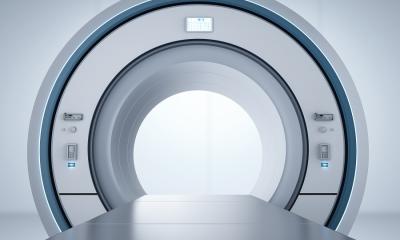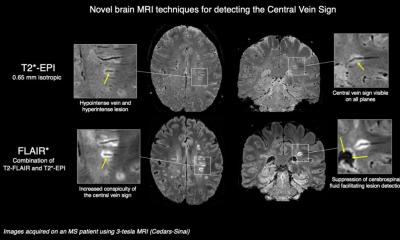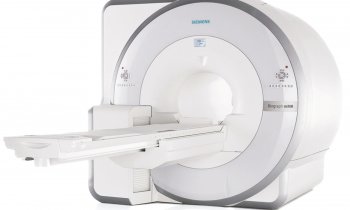MRI: Still the best tool for seizures
Improved imaging is leading to more surgical solutions
Anti-seizure medication is not successful in all patients, while in others such medication can have side effects. In recent years significant technical advances have delivered better imaging results, which, combined with growing demand for a surgical solution from patients whose medications do not control seizures, or those not wanting to take medication constantly, has led to an increase in surgical procedures for seizure patients.

This January, Professor Walter Kucharczyk, director of MRI at the University Health Network in Toronto, examined the issue of ‘Imaging evaluation of the patient with seizures’ at MR Symposium Garmisch-Partenkirchen, Germany, discussing the latest approach to imaging and diagnosis.
When scanning seizure patients, the diagnostic objective is to try to find any anatomic brain abnormalities that could account for the seizures. Professor Walter Kucharczyk believes that magnetic resonance imaging (MRI) still remains by far the best imaging test to discover if there is an anatomic or structural abnormality that might account for the seizure. Recently, some centres also combine this approach with other imaging technologies to improve results even further. Prof. Kucharczyk: ‘If a structural abnormality is identified it opens up the option of not only medical treatment for the seizures but also, if the medicine doesn’t work well, or has adverse effects, a surgical cure can be considered.’
Seizures may be isolated events, he said. They may have different causes in patients of different ages: in young children fever may be the cause; in older children there may be a dysplasia or brain tumour, whilst in adults, tumours, stroke, vascular malformations or previous head injuries may predispose patients to suffer seizures.
Neuroradiologists examine MR images very carefully to determine is there is an anatomical or structural reason for a seizure, he pointed out. If a clear reason for seizures is not found on MRI, this might exclude the patient from surgery unless other tests, such as EEG, PET or MEG, can identify a seizure focus. Instead, most of these patients are prescribed anti-epileptic medication to help reduce the electrical discharge that triggers the seizure.
The effects of better imaging
Radiologists and neurosurgeons remain acutely aware of the devastating impact seizures can have on people. ‘Seizures or epilepsy can ruin a person’s life; they never know when they are going to have a seizure,’ said Prof Kucharczyk. ‘As a result more and more patients who previously couldn’t have the surgical treatment are receiving very detailed evaluations to see if we can find an anatomic abnormality that might be causing the seizures, and see if something is there that previously no one could find that might be amenable to surgical treatment.’
Better lesion imaging, combined with other diagnostic tests, has improved decision-making over whether surgery can be performed safely, or not, taking into account the chances of success and the risk of complications. Prof Kucharczyk said: ‘Because we can see smaller and more subtle abnormalities, surgery is happening more often now than 10 or 20 years ago.’ Patients, he said, would also have their basic blood biochemistry analysed to make sure there is no electrolyte abnormality and an EEG (Electroencephalography) with 60/64 electrodes placed on the patients scalp to determine where the abnormalities or electrical impulses are coming from. Some patients also have a PET (positron emission tomography) scan, which can clarify the MRI or EEG and reduce ambiguities in test results.
‘PET is also used more often, with PET results fused to the MRI results to create a multi-modal hybrid image that shows both the anatomy and metabolism of the brain’ he said. ‘PET is very sensitive to abnormalities in brain biochemistry but the image resolution is not as good as MRI, so you might get a half centimetre resolution with PET but half a millimetre resolution with MRI. Many larger centres, he pointed out, are moving towards this approach as well as using magneto-encephalography (MEG) for brain mapping.
1.5-T, 3-T or 7-T?
Most of the world’s MRI machines are 1.5 Tesla and good for scanning seizures, along with the 3-T machines, but one current area of discussion is on the use of 7-T machines to scan seizures. There is a view among experts that 7-T offers the chance to see much more in the brain than 3 Tesla. However Prof Kucharczyk has reservations about its routine clinical use at this time and also noted that there were very few 7-T machines available worldwide, with most only available for research.
He is also concerned that, as the magnetic signal strength increases -- offering better images and the ability to see structures that could not previously be seen -- there are biological side effects for the patient. ‘Some people get dizzy when close to the 7-T magnet; they may get little flashing lights in their eyes or nerve stimulation in their arms and legs.’ While acknowledging 7-T machines will have a future role in scanning for epilepsy and seizures -- with his institution currently in the process of buying one – at present he believes that the machines should only be used by medical doctors working with scientists and engineers.
02.03.2011











